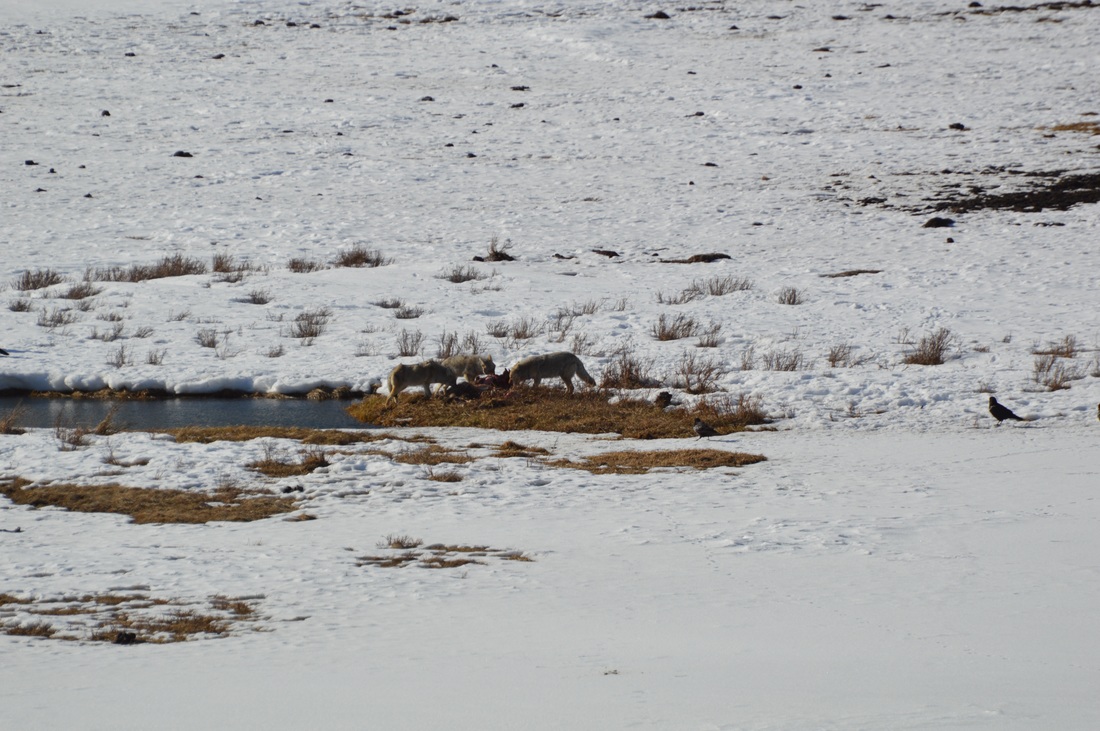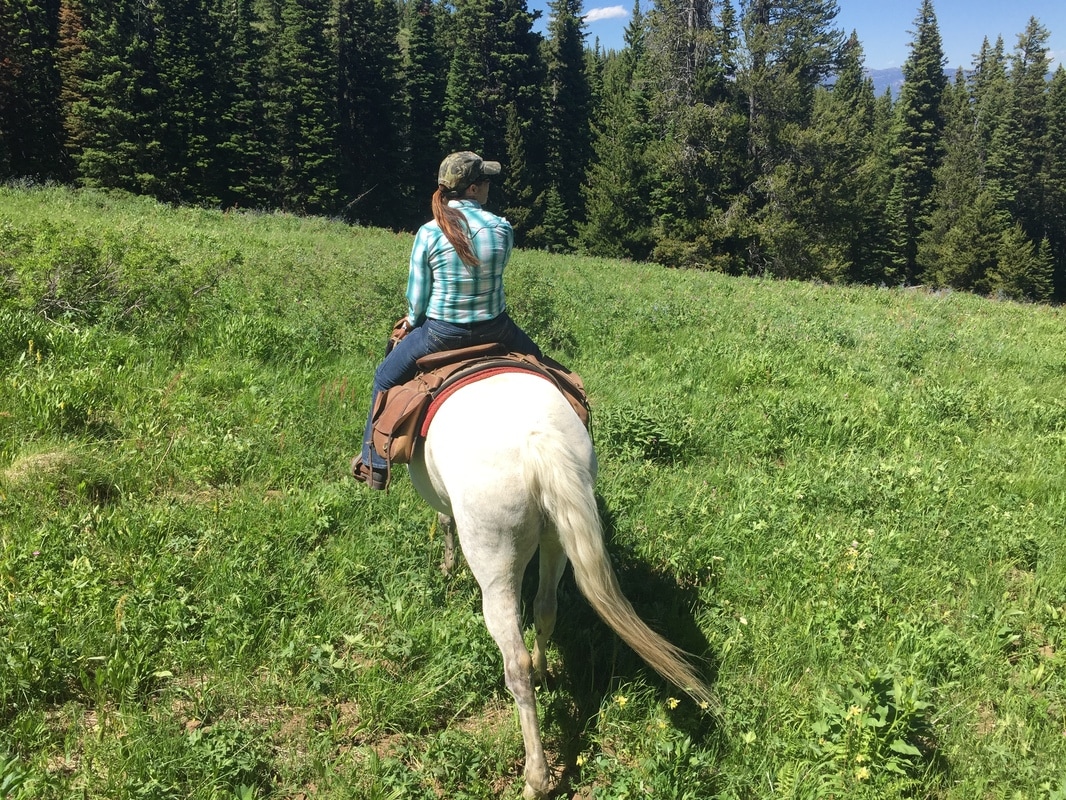|
My previous post revealed my slight anxiety about taking ten students to Yellowstone, in the middle of winter, to track cougar and moose as part of larger research studies being conducted in the park by scientists. I’m happy to report that four days in and I haven’t lost any kids yet. Our adventure really began the moment we landed in Bozeman, our Ecology Project International team met us under the grizzly statue and we circled up and played a mean game of the name game complete with personalized movements. From there we loaded up in two suburbans and headed for the wilds of Yellowstone National Park. We headed into the park first thing Wednesday morning to learn how to snowshoe since much of the data collection is done via snowshoe. Cougars are elusive and shy animals, Colby (our lead scientist) has been studying them for years and has never actually seen one in the wild. So the research is done via tracking and the snow pack makes it much easier to spot and follow tracks to locate kill sites, scat, hair samples and dens. All of this data is recorded in a database for the researchers to analyze. We hit the Lamar Valley of YNP to practice snowshoeing – this area is known as the American Serengetti because of the number of animals present. We saw elk, mulies, big horn sheep, bison, and coyote while out on the snow pack. We practiced our snow shoe skills while learning how to recognize tracks by analyzing straddle, stride and print size along with characteristics of ungulate, canids and cat tracks. A tired bunch headed back to the lodge when we noticed several cars pulled off in the Black Tail area and we paused to investigate. Right there, just a few hundred yards away, wolves had taken down a bison and four were feasting while a golden eagle kept watch. Seeing wolves in the wild is simply amazing – there really aren’t words to describe the rush of seeing such gorgeous animals in nature and observing them so closely. We stayed for about an hour until exhaustion and the cold made us start to pack it in when all of a sudden, Calvin hollers, “There’s a bear!” (Comment edited to protect the innocent, the actual quote was much more colorful. ) We turned around, and a huge grizzly is barrelling down the mountain right in front of us towards the kill site. The bison scatter, the golden eagle flies off and the wolves disappear. That grizzly broke hibernation early, probably due to unseasonably warm temperatures and a receding snow pack, and sniffed this carcass out. The bear lifted the rib cage up and shoved his head inside – that was a happy bear. Through our viewing scopes we could see his fur blow in the wind. There were moments where it appeared he was looking right at us. All of my students were so awe struck, I don’t think they could decide which was more exciting – the wolves or the grizzly! We passed by today and he was napping on the remains. We are going to try and find the wolf pack tomorrow and see what they’ve been up to since this kill. Stay tuned to find out how our day with the wolfies went!
For another great blog about this expedition written by the students on the course, visit the: Ecology Project Blog.
3 Comments
Cristina Veresan
3/11/2016 11:39:38 pm
What an awesome experience!! Cannot wait to hear more about your adventures. You have certainly been fortunate with finding wildlife so far.
Reply
Leslie Taylor
3/12/2016 10:01:36 am
What an amazing experience for you and to share it with the kids is stupendous. Have fun and be safe. I look forward to reading more.
Reply
Haley Smith
3/12/2016 11:12:41 pm
I went to yellowstone this summer and it was hands down the best experience/vacation I have ever had, I wish I could go back and live there! My father at the time was hiking the continental divide trail, I was able to meet up with him and do a 30 mile section of the trail through the backcountry of Yellowstone. I really think its an experience every young person should have, and way before they are 20!
Reply
Leave a Reply. |
About this Blog:I am a former Teachers for Global Classrooms Fellow, a program of the U.S. Department of State. I have completed graduate level training in Global Education and traveled to Senegal in April with the program to explore their educational system. This blog is a piece of the global education guide I have created to support other teachers and students in globalizing their classrooms. My focus area is life and environmental science and understanding the interconnectedness of Earth. For more information on the fellowship please visit the IREX website. Archives
March 2017
Categories |






 RSS Feed
RSS Feed